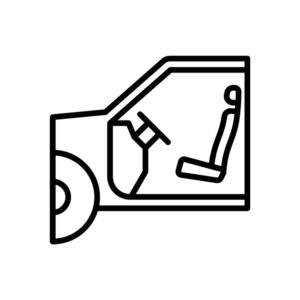The release bearing, also known as the clutch release bearing, plays a critical role in the smooth operation of the clutch system in vehicles. Without it, the driver would experience difficulty in engaging or disengaging the clutch. In this blog, we will explore the characteristics of the release bearing, its common damages, how to repair it, and tips to prevent potential issues.
What is a Release Bearing?
A properly functioning release bearing ensures:
- Smooth and quiet clutch engagement and disengagement.
- Reduced friction between the rotating clutch and the stationary components.
- Extended clutch system life by reducing wear on related parts.

Signs of a Damaged Release Bearing
A damaged release bearing can cause several noticeable symptoms, including:
Noise
Squealing or grinding noises when the clutch pedal is pressed.
Vibration
Shuddering or vibration when engaging the clutch.
Difficulty in Shifting
Trouble in shifting gears or a sticky clutch pedal. If these symptoms are ignored, it can lead to further damage to the clutch system and costly repairs.
Common Causes of Release Bearing Damage
Release bearings can become damaged for a variety of reasons:
Excessive wear
Over time, friction leads to natural wear and tear.
Lack of lubrication
Insufficient lubrication can cause overheating and wear.
Driver habits
Riding the clutch or frequent stop-and-go driving can accelerate damage.

How to Repair or Replace a Faulty Release Bearing
If you notice any symptoms of a damaged release bearing, it is essential to address the issue quickly. The repair typically involves:
- Removing the transmission to access the clutch components.
- Inspecting the clutch and release bearing for signs of wear or damage.
- Replacing the release bearing with a new part if it’s worn or faulty. Due to the complexity of the repair, it is often recommended to replace the clutch kit (including the pressure plate and clutch disc) at the same time.
The release bearing is an often overlooked but crucial component of the clutch system. Proper maintenance and timely repair can save you from expensive damages. For high-quality OEM parts, including release bearings, visit Aspatech Automotive Spare Parts. We offer a wide range of automotive spare parts to keep your vehicle running smoothly.
Frequently Asked Questions (FAQ)
Can I drive with a bad release bearing?
It’s not advisable to continue driving with a faulty release bearing. Doing so can cause further damage to the clutch system and lead to more expensive repairs.
How long does a release bearing last?
A release bearing can last anywhere from 50,000 to 100,000 miles depending on driving habits and maintenance.
What is the cost of replacing a release bearing?
The cost varies depending on the vehicle model and labor rates, but replacing a release bearing can range from $300 to $800.
Can I prevent release bearing damage?
Yes. Avoid riding the clutch and ensure the clutch system is regularly maintained and properly lubricated.




























